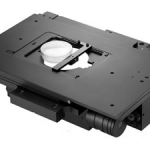
ONE common difficulty with automated gel and blot imaging systems is that of photographic resolution. Images are typically displayed on monitors at a standard resolution of 72 dot per inch (dpi). When it comes to printing and publication, this is…

THE Eclipse Ts2R is Nikon’s new intermediate-sized inverted research microscope, an instrument which can be configured for a number of observation methods including phase contrast, emboss contrast, Hoffman modulation contrast, and differential interference contrast (DIC). Now Prior Scientific has introduced…